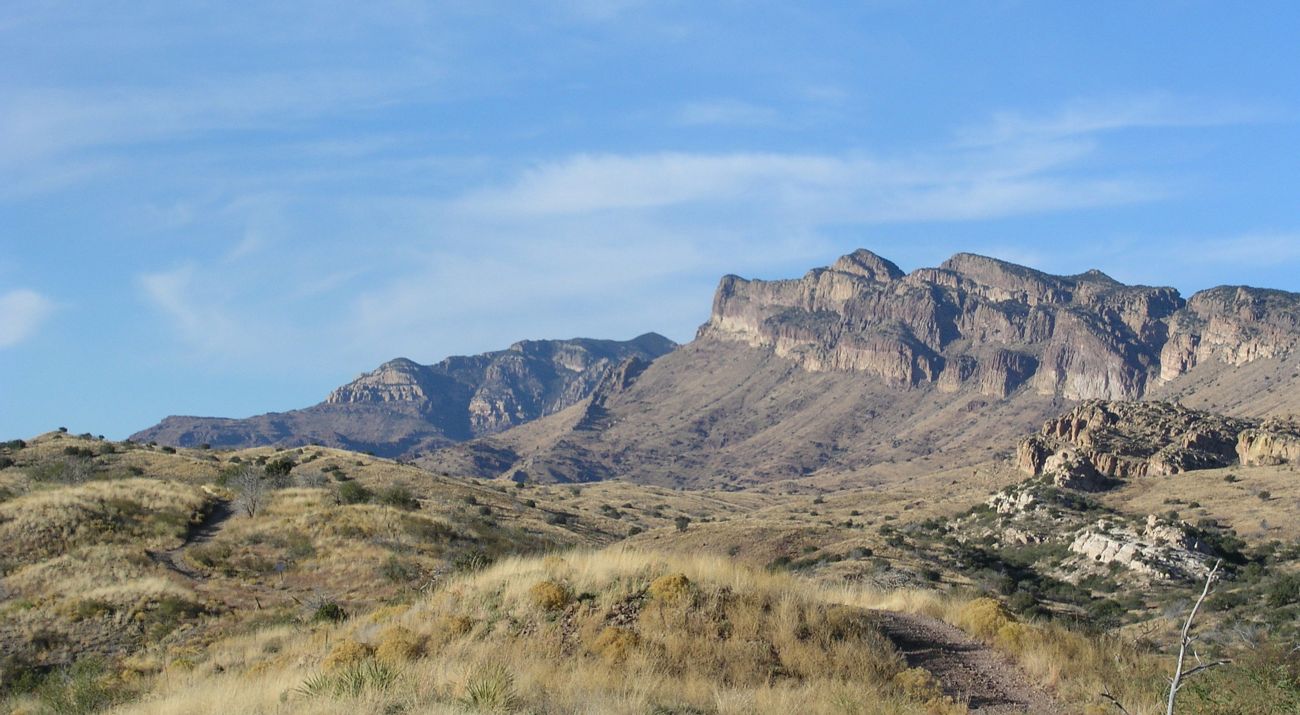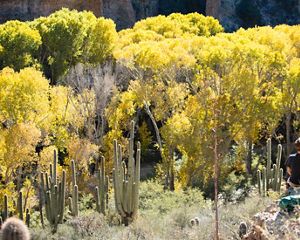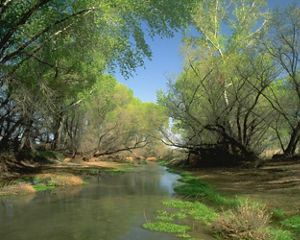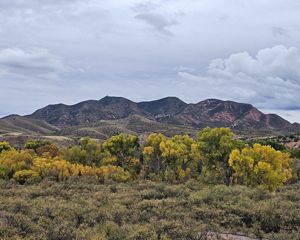Description
The Muleshoe Ranch Cooperative Management Area is 56,000 acres of rugged beauty, lush riparian areas and an array of recreational opportunities for outdoor enthusiasts. This area is a mosaic of public and private land cooperatively managed by The Nature Conservancy, Bureau of Land Management and Coronado National Forest. These three partners work together to conserve and enhance the unique ecosystems found here and to protect endangered species and the areas they depend upon.
The Muleshoe Ranch CMA encompasses most of the watershed area for seven permanently flowing streams, representing some of the best remaining aquatic habitat in southeast Arizona. Some 80% of the region's wildlife species depend upon these streamside communities at some time in their lives. The importance of this area to early settlers is seen in the numerous ranches and homesteads that dotted the area in the last 150 years.
Stewardship
A primary goal of the Ecosystem Management Plan for the Muleshoe is to restore and enhance streamside and aquatic habitat in Hot Springs, Bass, Double R and Wildcat Creeks. The EMP's strategy for doing this is to improve the watershed condition by increasing the abundance and cover of perennial grasses and reducing shrubs. This will be accomplished by (1) restoring fire as a natural process to the Hot Springs watershed using prescribed burns; and (2) continued grazing rest until vegetation recovery occurs.
Watershed improvement benefits aquatic habitat and native fish. In-stream cover, an important component of fish habitat, has increased by more than 3.5 times in Hot Springs Creek. This includes increases in overhanging vegetation, floating/emergent vegetation, and undercut bank. The maximum depth of pools, glides and runs has also increased. The maximum depth of pools has increased and has the number of deep pools per mile in Hot Springs.
Seven species of native fish can be found in Muleshoe's streams. Native fish density has increased significantly in Hot Springs showing an average annual increase of 6.9%. Gila chub captures and chub density have also increased with density increasing at an average annual rate of 18.5%. In 2005, the Gila chub was listed as an endangered species. TNC scientists are using innovative approaches to increase native populations.



